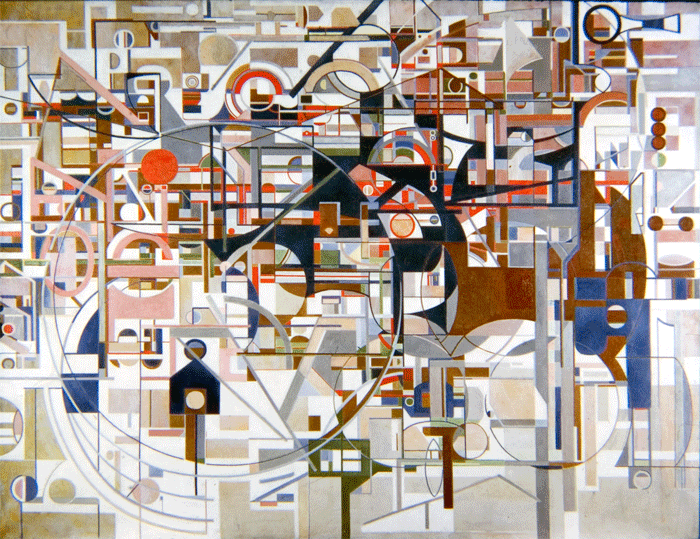This article is from the ARTnews Edition – Volume 78, Number 7, 1977
MAURICE GOLUBOV (Tibor de Nagy):
This is one of the “sleeper” shows of the season. Golubov, born in Kiev in 1905, has been painting since he first arrived in America in the 1920’s. His work is, in fact, currently being featured alongside examples by such early contemporaries as Demuth, Dove, Hartley and Joseph Stella, in an exhibition titled “Modern American Painting: 1910-1940” at the Museum of Fine Arts in Houston. Golubov’s painting style – located in Cubism and Constructivism – shares a good deal with the similarly inspired styles of the early American modernists – except that Golubov is still doing it, as if Action Painting, Pop, Op and all had never happened. Seeing that Golubov has outlived all of his influences and most of his contemporaries, the viewer might be tempted to a certain perverse fascination with Golubov’s status as a dinosaur surviving the crunch of changing artistic fashions; the freshness, intelligence and sheer visual inspiration of these canvases from 1950-1970, however, denied one any such cheap art-historical thrills. Golubov’s canvases, like the 1970 Metropolis, are infinitely intricate machines of geometric forms and modernistic hues, cityscapes of the mind that take up American-style Constructivism where Joseph Stella left off. Through 50 years of painting, Golubov has managed to transform an art-historical manner into a personal style, with astounding technical skills and coloristic genius accounting for the visual validity of the work.
Though an isolated figure, Golubov is emerging as an important one, important in his contribution not to the movements of modern art but to the image of the modern artist as a figure of integrity. In a sense, his paintings can be read as visual equivalents of this integrity; in their never-ending interlocking of line and circle and arc and plane, they reaffirm the early 20th-century notion that the difficulties of modern existence are best handled – and, indeed, understood – through the difficulties of integration rather than the expediencies of separatism, artistic or political.
By Gerrit Henry
